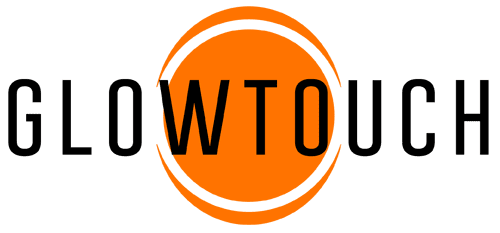If you have a customer support operation, it may seem like all is well on the surface. But there’s a good chance it’s not where it could be.
Objectively, you can look at the number of tickets you serve, see your output and think you’ve maximized its benefits. But keeping your focus solely on total output isn’t the best strategy for many businesses. Instead, expectations are key: determining how much output your team should aim for is the first step in creating a customer support strategy that maximizes efficiency while minimizing costs.
An outcomes-based strategy sounds like a reliable barometer for how your business is doing. That’s why most businesses track numbers such as the following:
- Number of chats per day
- Number of tickets processed per day
- Number of phone calls per day
But instead of asking how many calls were placed on a given day, business leaders should determine how many calls make sense for the amount of staff they have. Efficiency is about more than raw numbers, which is why teams should focus on putting this data into the context of their specific business, industry and service or product offerings. A strategy that leans too much on total output can set you up to miss inefficiencies and other areas for improvement. You might also overlook costs.
Defining Efficiency
In customer support, how can you be sure your team is running quickly and efficiently? There are several key ways to measure efficiency: availability, occupancy, concurrency and average handle time (AHT).
Availability
Availability refers to how much time workers have to serve customers. At GlowTouch, many of our clients come to us with teams that average 60 to 70% customer service availability. With the help of our customer support services, they are often able to increase that number to 90% or higher.
Occupancy
Occupancy is the percentage of the time your workers spend actually serving customers, rather than waiting to serve customers (waiting to take a call, for example). The higher the occupancy level, the more cost efficiency you get from your team. A lower occupancy level can help your team limit wait times. Many of our clients have 50 to 70% occupancy when they first come to us, but we can help them reach as high as 90% occupancy. Based on specific business needs, occupancy can be scaled up or down.
A related measure to track is abandonment rate, which refers to the percentage of callers that leave before a customer support representative can answer a ticket. High abandonment rates can happen when occupancy is extremely high and is something to consider.

Concurrency
Concurrency tells us how many tickets or chats your team is handling at the same time. At GlowTouch, we can handle anywhere from two to eight tickets concurrently. As you increase the number of chats, cost efficiency improves, but personal touch can be compromised. The right configuration for you will be based on your business needs in sales, AHT, costs and efficiency. We can model different outcomes based on scaling up or down concurrency.
Average Handle Time (AHT)
AHT varies depending on what types of support issues your team is handling. Highly technical tickets can take hours, while more straightforward requests can be resolved much more quickly. It’s important to keep in mind that high AHT can mean inefficiency, because it might indicate that team members aren’t capable of resolving customer issues. At the same time, a low AHT number could mean that representatives are processing calls without solving issues, forcing the customer to call back.
The key is finding the AHT that’s ideal for your business: not too high or too low, but just right. This can be done, though it requires planning, prepping and working smarter as a team, with a longer term focus on building value for your customer and ensuring your customer’s success.
When you improve customer service, you increase the chances of future business. #CustomerSupport
Click To Tweet
Cost Per Resource
Cost per resource is another key element in maximizing efficiency. For example, if you pay a support representative $14 per hour, a 30-minute call costs $7 (assuming they handle one call at a time). We calculate your business’ ideal output this way:
Number of resources (support representatives) times AHT at [X] availability and [X] occupancy = the number of tickets your team should answer per day.
It’s also important to consider non-salary or wage costs into this calculation. Examples include:
- Health insurance
- Building costs
- Human resources costs
- Hiring and training costs
- Taxes
One way to increase efficiency even further is through partnering with an outsourced customer support firm, which lowers cost variables like these.
Turning Your Support Center Into a Profit Center
When you improve customer service, you increase the chances of future business. In fact, it’s possible to turn a profit on customer support — we’ve done it.
Think of customer support as not just a troubleshooting center, but also as an opportunity to proactively help customers improve their businesses. You can help your customers be successful in their businesses by having your team dig into their true problems and needs, then introduce them to some of your products that will help them. At GlowTouch, we’re able to deliver our clients twice as much revenue from the dedicated support team we provide, through upselling strategies, exceptional on-boarding, and continued focus on positive experiences through our customer-centric approach. In turn, our support contracts are half the cost compared to the increase in ROI and customer lifetime value we extend to every client. Our resource, How to Turn Your Support Center into a Profit Center, gives a more in-depth look at support profitability.
Outsourcing and Quality
Outsourcing can help achieve profitability because both costs and overhead are lower. However, there are a few considerations to keep in mind. First, you should ensure that your outsourcing partner stays within 5% of your existing quality metrics, such as customer satisfaction (CSAT). Your partner should prove their efficiency by meeting — or exceeding — your expectations. GlowTouch can help you create a customer support plan that’s right for your business. For more information about measuring customer support, download our Guide to Customer Support Metrics.


















































